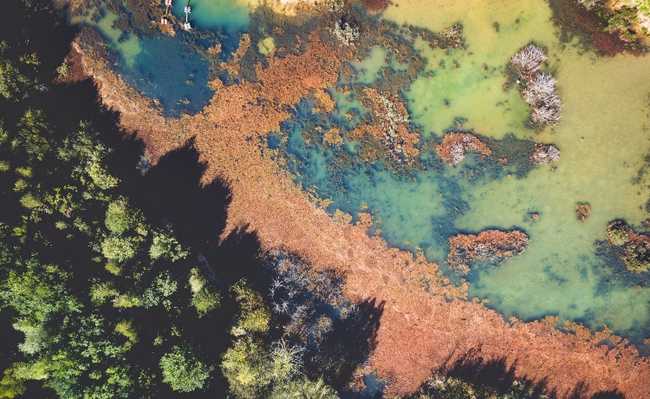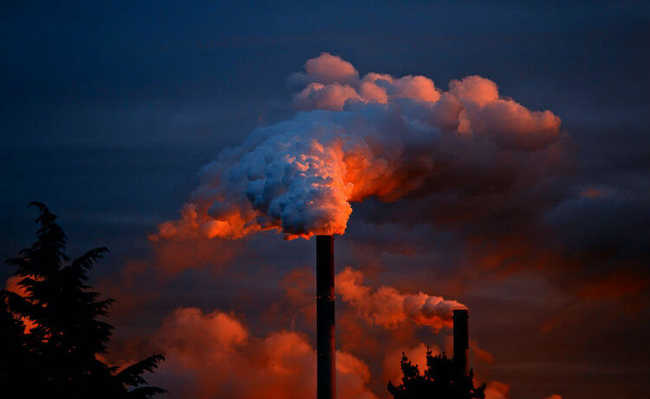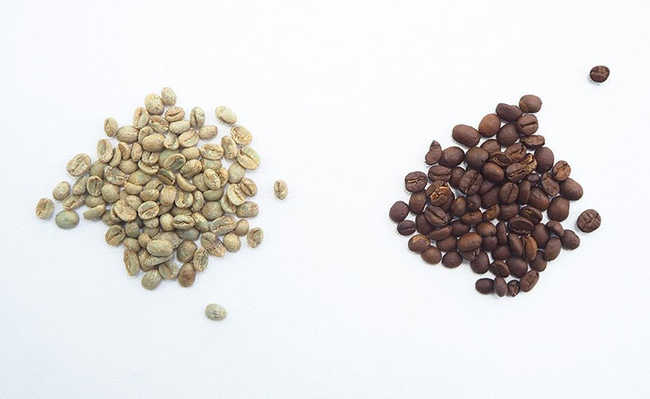what is biosphere
Biosphere is the set of all Earth's ecosystems

Image of Ivan Bandura in Unsplash
Biosphere is the set of all ecosystems on Earth. The word derives from the Greek BIOS, life and sfaira, sphere, which means sphere of life. Included in the biosphere are all living organisms that inhabit the planet, although the concept is generally broadened to include their habitats as well.
The biosphere is made up of a network of interconnections between all organisms and the physical environment. It is here that physical and chemical factors form the favorable environment for life.
Biosphere characteristics
The biosphere includes all of Earth's ecosystems, from high mountains (up to 10,000 m high) to the sea floor (up to about 10,000 m deep). In these different locations, environmental conditions also vary. Thus, natural selection acts in different ways on living beings in each region.
Under great depths in the sea, for example, only beings that are adapted to the great pressure that the water exerts on them and the low or absent luminosity survive. In the high mountainous altitudes, beings adapted to low temperatures and thin air survive. In the biosphere, air, water, soil, light and organic matter are factors directly related to life. This means that the biosphere is made up of elements that are found in other spheres of the Earth and that are essential for the maintenance of life present on it.
It is noteworthy that the biosphere is a small portion of the planet, since, as we move away from its surface, the conditions necessary for life tend to decrease. The biosphere is estimated to be between 13 and 19 km thick.
The biosphere is related to the other layers of planet Earth. All layers are related to each other:
- Lithosphere: is the solid layer, formed by soil and rocks;
- Hydrosphere: is the liquid layer, formed by rivers, lakes and oceans;
- Atmosphere: is the gaseous layer;
- Biosphere: it is the layer inhabited by living beings that integrates the terrestrial, aerial and aquatic environments.
biosphere or ecosphere
The word ecosphere can be considered synonymous with biosphere, as both terms refer to the layer of the Earth inhabited by living beings. However, the concept of ecosphere is more used to emphasize the interrelationships between living beings and the abiotic environment.
Biosphere division
The biosphere can be divided into three distinct subcategories, called biocycles. Each biocycle is composed of different biomes.
epinocycle
This division of the biosphere is made up of the terrestrial fraction of the Earth. The biocycle has four geographically located means to house a certain species of living being, called biochores. In this case, the biochores of the epinocycle are deserts, forests, savannas and fields.
- Deserts: Sahara, Arabia, Calaari, Libya;
- Forests: Amazon Forest, Alaska Boreal Forest, Atlantic Forest;
- Savannas: Caatinga, Serengeti in Africa, Cerrado, Pantanal;
- Fields: Grassland (prairie), Steppes, Pampa.
Limnocycle
This biocycle is formed by aquatic environments and is inhabited by freshwater animals. The biochores of this biocycle are:
- Lentic waters: systems where the waters remain still (swamps, ponds, swamps);
- Lotic waters: systems where water is flowing (rivers, streams, streams).
thalassocycle
The thalassocycle consists of the portion of the oceans, where marine animals live. According to the category, these animals can be divided into:
Nectons: large animals that can swim quickly, overcoming the density of seawater. The biochores of these marine animals are:
- Neritic zone: region that is close to the surface. It represents the limit with the highest biomass and aquatic productivity, harboring a large number of organisms;
- Bathal zone: located below the neritic zone, it is located between 200 and 2000 meters deep;
- Abyssal zone: environment located between 2000 meters deep and the oceanic substratum, being a region totally without light and where few life forms inhabit.
Plankton: tiny organisms that inhabit the ocean surface. Because they do not have displacement skills, they live subordinate to the ocean currents and serve as food for other animals.
Bentons: are larger beings that live on the ocean floor and spend most of their time fixed on rocks or under the sand of the ocean floor.
The program “Man and the Biosphere”
It is known that the biosphere's imbalance is caused by human interference in nature. Aiming to promote knowledge, practice and human values to implement good relations between populations and the environment across the planet, the Man and the Biosphere (MaB) program was created as a result of the "Conference on the Biosphere" held by UNESCO in 1968.
MaB is an international scientific cooperation program on interactions between human beings and their environment. It seeks to understand the mechanisms of this coexistence in all bioclimatic and geographical situations of the biosphere, seeking to understand the repercussions of human actions on Earth's ecosystems. The program develops two lines of action:
- Directed deepening of scientific research, for a better understanding of the causes of the trend towards a progressive increase in environmental degradation on the planet;
- The conception of an innovative planning instrument, the Biosphere Reserves, to combat the effects of the aforementioned degradation processes, promoting nature conservation and sustainable development.
Biosphere Reserves are areas of terrestrial or marine ecosystems recognized by the program as important at the world level for the conservation of biodiversity and sustainable development and which should serve as priority areas for experimentation and demonstration of these practices.
Biosphere Reserves are the main instrument of the MaB Program and comprise a global network of areas focused on Cooperative Research, Conservation of Natural and Cultural Heritage and Promotion of Sustainable Development.
To do so, they must have sufficient dimensions, appropriate zoning, defined policies and action plans, and a participatory management system involving the various segments of government and society.
In Brazil there are seven Biosphere Reserves:
- Atlantic Forest (1992);
- São Paulo Green Belt (1993);
- Cerrado (2000);
- Pantanal (2001);
- Caatinga (2001);
- Central Amazon (2001);
- Serra do Espinhaço (2005).
Importance of conserving the biosphere
As seen, the term “biosphere” refers to all the natural elements that provide and allow life on Earth, such as soil, water and the atmosphere. Therefore, it is extremely important to conserve it, since its imbalance affects all ecosystems on the planet.










